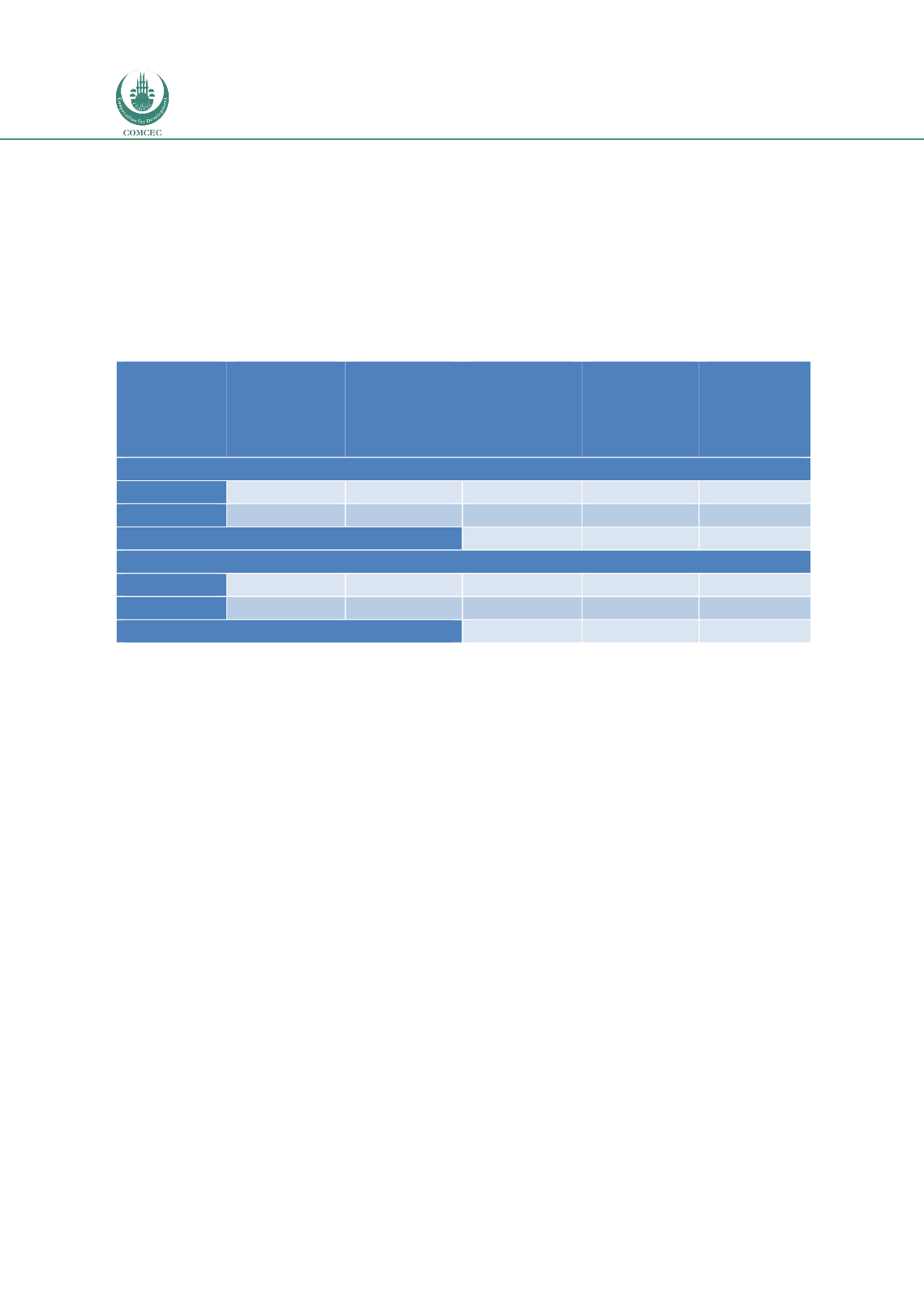

Reducing Postharvest Losses
In the OIC Member Countries
120
markets. Given that the seller does not get the full market value of the milk it has been
assumed that 70% of the value is retained and there is a 30% loss in value through forced
consumption of milk at the farm level.
Other causes of on-farm loss include spillage, milking practices (e.g. cleaning of udder, type of
milking utensils used), lack of cooling, and animal diseases affecting the amount and quality of
milk produced (e.g. mastitis).
Table provides an estimation of losses in Uganda’s value chain
and their value.
Table 54: Estimated monetary value of annual quantitative PHL in Uganda’s dairy value
chain (in US$)
Stage in the
value chain
Quantity of
milk
(tonnes)
Postharvest
losses (PHL)
(%)
Quantitative
PHL
(tonnes)
Unit Value
(US$/ tonne)
Value of
Annual
Losses
(million
US$)
High loss scenario (2012 production, FAOSTAT)
Production
1,207,500
6%
72,450
187
13,548,150
Marketing
784,875
21%
164,824
187
30,822,041
Total
237,274
187
44,370,191
Average loss scenario (estimated 2015 production, marketing, and loss figures)
Production
1,400,000
3%
42,000
187
7,854,000
Marketing
910,000
10%
91,000
187
17,017,000
Total
133,000
187
24,871,000
During the rainy season milk losses reportedly more than double because, on the one hand,
production increases, whilst, on the other hand, milk collection is constrained due to poor road
conditions. It is estimated that during the wet season up to 42.8% of milk produced remains on
the farm unsold (FAO/ILRI, 2005), thereby leading to forced consumption by humans (e.g.
farmers family, neighbours). In particular, this is likely to affect producers in more remote
villages.
The same study (FAO/ILRI, ibid) states that along the milk supply chain, up to 18% of milk is
lost through spillage and spoilage.
Masembe Kasirye (2003) found that milk losses at the milk collection centres (MCC) are lower
in areas where the quality of raw milk is more controlled if it enters the formal sector, as
opposed to the lack of control and poorer quality of milk sold in the informal market. Whilst
most collection centres in urban/peri-urban areas have electrically-operated coolers, other
collection centres (i.e. mainly those in remote areas) often lack electricity and cannot easily
cool their milk. In this context, according to Masembe Kasirye, F (2003), spoilage losses
associated with electricity failure average 2% of incoming milk per day.
In parts of the country where there is a lack of marketing infrastructure, the quality of milk is
likely to be poor due to lack of quality control, lack of cooling facilities, and use of
inappropriate containers (e.g. plastic jerry cans which are difficult to clean). For example, in
Nakasongola 37% of the milk supplied during the wet season soured and was returned to the
primary vendor at the pooling centre, whilst the loss during the dry season due to souring was
much less (11%) (Masembe Kasirye, 2003). In comparison, in the South-West of the country
milk losses are lower which can be explained by the relatively controlled raw milk quality
















